
Become a member
Join today and help protect nature, beauty and history – for everyone, for ever. Enjoy access to more than 500 places with National Trust membership.
Discover Wallington, where a historical house meets rolling hills, woodlands and a walled garden.
Cambo, near Morpeth, Northumberland, NE61 4AR

| Asset | Opening time |
|---|---|
| House | Closed |
| Café | 11:00 - 16:00 |
| Car Park | 11:00 - 16:00 |
| Estate | 11:00 - 16:00 |
| Woodland | 11:00 - 16:00 |
| Shop | 11:00 - 16:00 |
| Walled garden | 11:00 - 16:00 |
| Ticket type | With Gift Aid | Without Gift Aid |
|---|---|---|
| Adult (18+) | £22.00 | £20.00 |
| Child (5-17) under 5s free | £11.00 | £10.00 |
| Family (2 Adults and up to 3 children) | £55.00 | £50.00 |
| Family One Adult | £33.00 | £30.00 |
| Ticket type | With Gift Aid | Without Gift Aid |
|---|---|---|
| Adult (18+) | £15.40 | £14.00 |
| Child (5-17) under 5s free | £7.70 | £7.00 |
| Family (2 Adults and up to 3 children) | £38.50 | £35.00 |
| Family One Adult | £23.10 | £21.00 |
| Ticket type | With Gift Aid | Without Gift Aid |
|---|---|---|
| Adult (18+) | £24.20 | £22.00 |
| Child (5-17) under 5s free | £12.10 | £11.00 |
| Family (2 Adults and up to 3 children) | £60.50 | £55.00 |
| Family One Adult | £36.30 | £33.00 |
Mobility parking in main car park and Walled Garden, accessible parking next to the Walled Garden, mobility scooter hire, adapted toilet in courtyard. Partly accessible grounds as there are some steep slopes, loose gravel and uneven woodland paths and steps. We have a small number of scooters available to book with no charge, donations are welcome. Please email wallington@nationaltrust.org.uk or call 01670 773606 to book 48 hours in advance .
Large print version of the Welcome Leaflet available from Visitor Welcome.
From Morpeth: Arriva 419 - a circular bus route from Morpeth every Saturday, year round. Bus charges apply for all passengers. Non-National Trust members arriving at Wallington on this bus service will receive 20% discount on their admission fee. View the timetable
Find out all about what you can see and do as well as some practical information to help you plan your visit to Wallington.
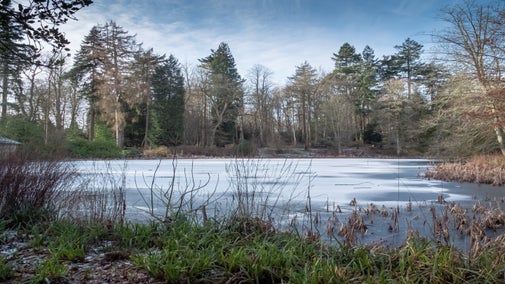
Discover the colourful, fragrant plants in the Walled Garden, take in the different spaces and areas and look out for the peaceful Mary Pool.
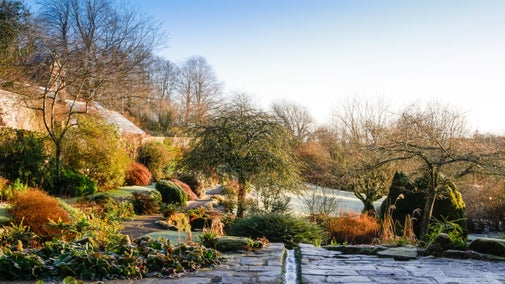
Wallington is a two pawprint rated place. Find out more about where you can walk your dog at Wallington, from the miles of parkland and woodland trails to the historic walled garden.
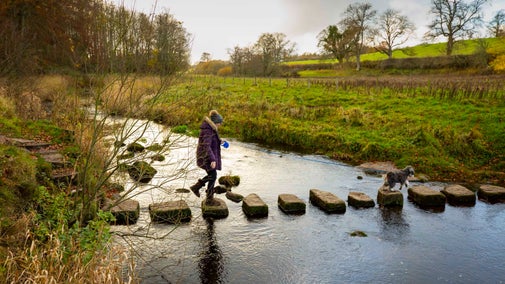
There's lots to keep the family entertained at Wallington, whatever the season. Look out for wildlife on the River Walk, zoom along the Dragon cycle trail or go wild in one of the play areas (play train currently closed). Don't forget our impressive selection of splashy puddles on soggy days; we've got the mud if you've got the wellies! For rumbling tummies, why not make a stop at the Clocktower Café or one of our kiosks?

Wallington has a varied programme of activities and events all year round. Find out what's on.
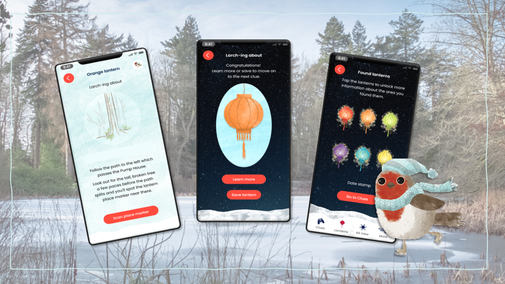
Once home of Sir Charles Philips Trevelyan, Socialist MP and ‘illogical Englishman’ and his unconventional family. Home to wonderful ceramics and book collections, with the impressive Central Hall showcasing the story of Northumberland.
The Walled Garden is truly a garden for all seasons, full of colourful borders. The garden is planted for nature, so look out for a variety of butterflies, bees and other wildlife.
East Wood is full of winding woodland walks and attractive ponds whilst the West Wood is home to the wildlife hide, wellbeing woods and four play areas.
Within our fab play areas, there's plenty of outdoor adventures to be had with your family. Enjoy the adventure play area with zip line, play fort and rope bridge and the Little Acorns play space. The play train and station platform are currently closed.
Explore the Dragon cycle trail on two wheels. There are two family-friendly routes to choose from, an easy 1.5km green route that's perfect for little legs, or a more challenging but still family-friendly 4.5km blue route. Cycle hire is available (seasonal opening hours apply.)
The perfect place to relax and treat yourself on your visit. With a wide menu of hot and cold food and drink, including those all important National Trust scones.
In Wallington's shops you'll find a wide selection of quality gifts and homeware, as well as artisan local products and locally-grown plants.
There's lots to keep the family entertained at Wallington, whatever the season. Look out for wildlife on the River Walk, zoom along the Dragon cycle trail or go wild in one of the play areas (play train currently closed). Don't forget our impressive selection of splashy puddles on soggy days; we've got the mud if you've got the wellies! For rumbling tummies, why not make a stop at the Clocktower Café or one of our kiosks?

Discover the colourful, fragrant plants in the Walled Garden, take in the different spaces and areas and look out for the peaceful Mary Pool.

Step inside the house to uncover the fascinating stories of those who lived here, told through their collection of artworks, books, ceramics and curiosities.

Reconnect with nature at Wallington and explore miles of footpaths along rivers and through woodland, bring your bikes and try the cycling trail and spot wildlife including red squirrels and otters.
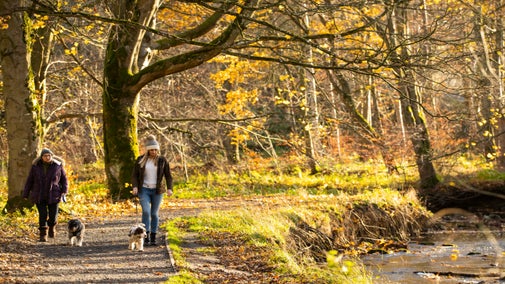
The wider estate at Wallington has several cattle and sheep farms. Read our guide to staying safe around the animals when you’re walking along the estate's footpaths and trails.

A short, easy walk along the River Wansbeck and around the Wallington Estate in Northumberland.

Follow this circular walk along the Wannie and Rothbury railway lines. As you journey through a variety of habitats including farmland, woodland, hedgerows and streams, keep an eye out for birds, wildflowers and fungi that have reclaimed this once industrial landscape.

Explore the wider Wallington estate on the Dragon cycle trail: pedal across Broom House Farm's fields, whizz through the woods and enjoy far-reaching views across Northumberland.
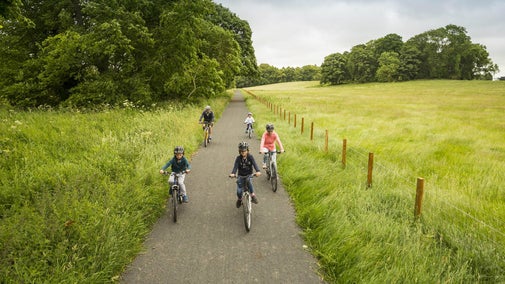
Enjoy this challenging but invigorating walk across moorland, around the shores of Fontburn Reservoir and past some of Wallington's oldest archaeological sites.

Enjoy a relatively easy circular route through woodland and grassy fields at Wallington.

Stop by the Clocktower Café at Wallington for a selection of hot and cold drinks, and homemade bakes. Then browse the shop for gifts, books, homewares and more.


A light and cosy cottage in Wallington’s courtyard, surrounded by walking and cycling trails.

The perfect location for long days exploring the outdoors as well as rest and relaxation amongst nature.

A luxury lakefront cottage that’s steeped in history and surrounded by stunning views.

An idyllic holiday spot, this restored farmworker's cottage on the Wallington Estate is perfect for a peaceful getaway.

A cosy stone cottage in the beautiful grounds of the Wallington estate, perfect for walkers, cyclists and wildlife lovers.
Step into a magical winter adventure at Wallington’s China Pond! Follow fun clues around the pond to discover hidden augmented reality lanterns. Collect them in the app to unlock a beautiful wintry scene on the virtually frozen pond.
Learn to Nordic walk at Wallington this year with the team from Strolls with Poles. Enjoy the scenery around Wallington whilst learning this wonderful new skill.
Join our knowledgeable volunteers for a walk through the formal gardens and along the River Wansbeck, discovering more about how this special place has changed over the years.
Join our knowledgeable volunteers for a walk through the woodlands and beside farmland, discovering more about how this special place has changed over the years.
Fairies from all corners of the land will be fluttering into Wallington for a magical Snowdrop Festival to welcome the arrival of spring.
Whether you're a regular runner, a complete beginner or if walking is more your thing, TRAILDOG Events invites you to experience the true joy of exercising with your four legged friend.
Join a volunteer led guided walk exploring farmland on the Wallington estate
Enjoy a walk through farmland encompassing Cambo village and its notable historic landmarks.
Gifted to you by Sir Charles Philips Trevelyan, Socialist MP and ‘illogical Englishman’, the 13,500-acre estate has something for everyone. The Trevelyans loved being outdoors and close to nature. The house is surrounded by an informal landscape of lawns, lakes, woodland, parkland and farmland, just waiting to be explored.
Visit the impressive home of Sir Charles and discover more about this remarkable man. You can explore the history of Northumberland in huge pre-Raphaelite paintings around the Central Hall or take time to discover the beautiful furniture, treasured collections and quirky curiosities in each room.
Don't miss the hidden walled garden, nestled in the woods. It was beloved by Lady Mary Trevelyan and remains a beautiful haven whatever the season. Enter through Neptune's Gate, sweep down the stone staircase, by the Mary Pool and soak up the tranquil atmosphere. Wander past colourful borders and enjoy the newly created storytelling garden.
Enjoy being active outdoors on the Dragon cycle trail. Take to one of the many scenic walks including the river walk. Enjoy wild play in the West Wood at the play area and visit the family-friendly wildlife hide to see what you can find.
Discover how key members of the Blackett family were instrumental in remodelling the Wallington Estate into the house and grounds we know today.

Wallington is going big! Wilder Wallington is a landscape-scale nature renewal project across the whole estate and beyond, aiming to capture carbon, reverse the decline in biodiversity and the impacts of climate change, and provide a place where nature and people to thrive together.
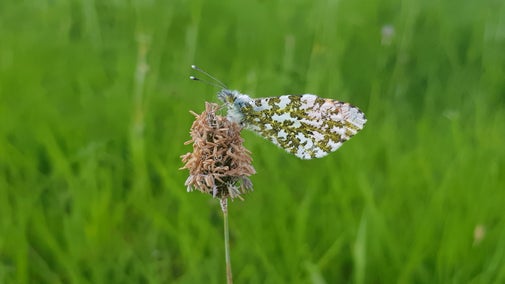
The pine marten was once a familiar feature of English woodlands and plays an important role in keeping our woodlands healthy and balanced. It's thought that the species was once the country’s second most common carnivore (after the weasel), but due to habitat loss and hunting it's now the second rarest (after the wildcat). Here at Wallington we're working in partnership with Vincent Wildlife Trust to encourage the natural expansion of pine martens into the Wallington Estate.

Wallington has reintroduced beavers to the estate in an effort to renew and restore nature in the hope that they will help create a wildlife-rich wetland landscape. Over a year and a half after their release, find out what changes we have seen in the enclosure.

The long-term recovery of red squirrels remains a top priority for us here at Wallington and is part of a wider nature recovery programme. Our rangers and volunteers work across the entire estate safeguarding and supporting the variety of native species that call this special place home; read about our red squirrel conservation programme.

Find out more about our significant conservation project aimed at protecting the native white-clawed crayfish, now classified as endangered and at risk of extinction.
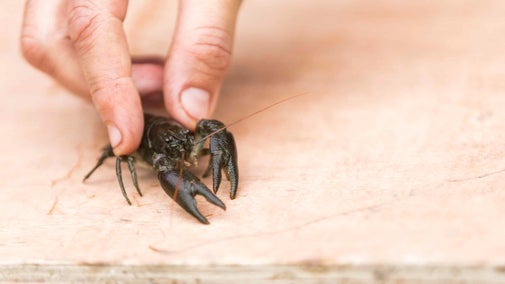
Nature gives us life: through the supply of clean water, the pollination of our crops, the air that we breathe. But our islands are in danger and we’ve seen a higher depletion of nature here than almost anywhere else in the world. Adopt a Plot is a small way you can take a big step towards bringing back nature. From £7.50 a month, you can help renew a nature super site. These six sites, including Wallington, spread across the UK, have been specially selected for their potential to restore nature across whole landscapes. Find out more.
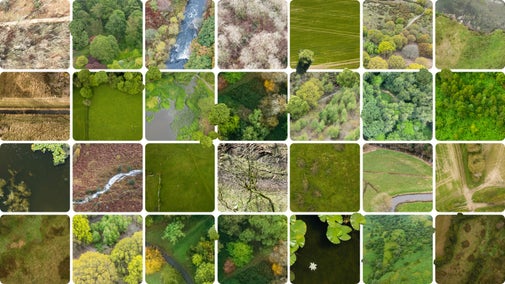
Find out all about the volunteering opportunities on offer at Wallington


Join today and help protect nature, beauty and history – for everyone, for ever. Enjoy access to more than 500 places with National Trust membership.
By sharing your email address you’re agreeing to receive marketing emails from the National Trust and confirm you’re 18 years old or over. Please see our for more information on how we look after your personal data.